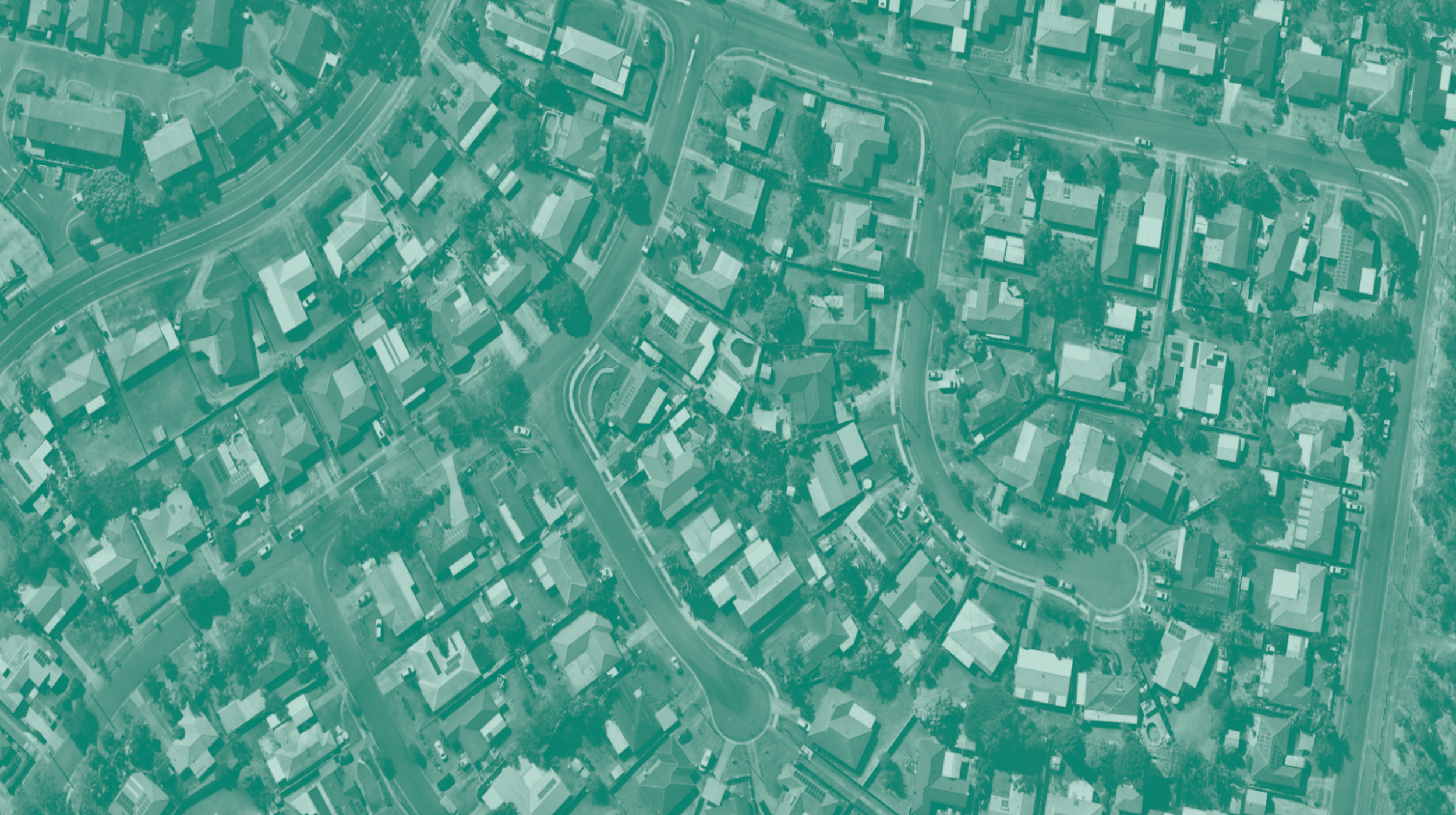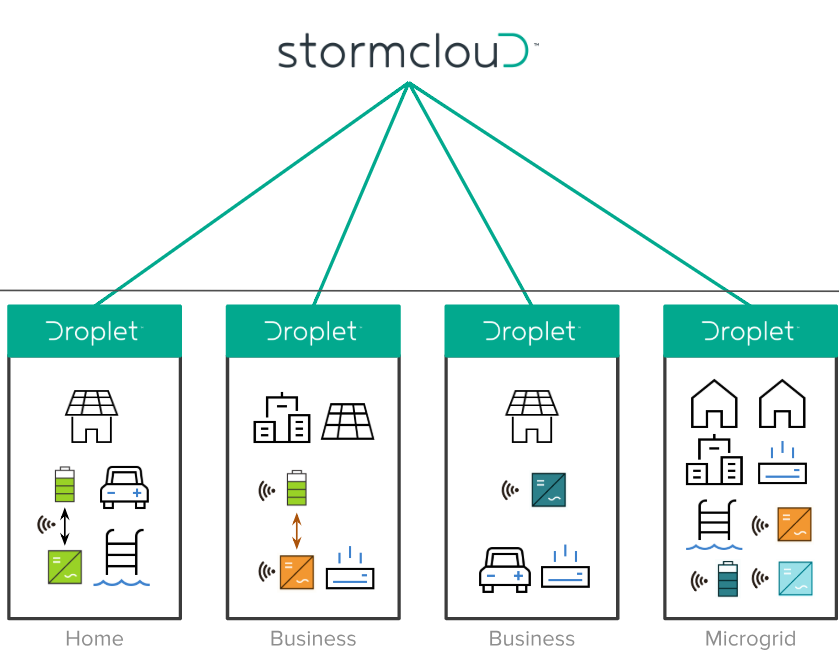Simplifying complexity in virtual power plants & distributed energy management
Distributed energy is the future of Australia’s electricity system. The Australian Energy Networks Association (AENA) anticipates that by 2027 40% of energy consumers will have a distributed energy resource (DER) on site. This number is expected to surge to nearly 70% by 2050. Industry bodies such as the Australian Energy Market Operator (AEMO) and Australian Energy Market Commission (AEMC) - among others - have made similar projections. Many of these will take part in virtual power plant (VPP) programs, which reward system owners for supplying services into the energy system.
While DERs have been revolutionary for consumer choice and the ‘democratisation of energy’, their rise poses a number of unprecedented challenges to the electricity system, with risks for individuals, businesses, operators and the system as a whole if not managed proactively and effectively. These challenges fall into two broad categories: Complexity and security.
This article - part of SwitchDin’s forthcoming white paper about standardisation in the distributed energy space - investigates how edge computing solutions like SwitchDin’s will help energy companies to address the first of these two challenges. Part two of this series will cover the issue of security: system resilience and cyber security.
DER management challenge: Complexity
Get the full white paper
Standardisation & the role of edge computing in DER management
There are roughly 300 registered generators on the National Electricity Market - already a complex machine. DER numbers on the grid could expand to 5 million in less than a decade’s time.
As the number of DERs increase, so will the need to effectively manage them as part of the broader electricity system. Electricity retailers, networks and aggregators will aim to harness the collective potential of DERs to address grid related challenges and new market opportunities..
Although the terminology varies, one name for a tool to do this is a distributed energy resource management system (DERMS). There are different architectures being explored but we may generally consider DERMS to be a tool that orchestrates fleets of DERs either directly or as groupings or virtual power plants (VPPs). For example, SwitchDin’s Stormcloud™ platform is a DERMS and VPP solution that manages fleets of DERs through localised Droplet™ controllers (see: How it works).
Complexity is arguably the most important of the challenges covered in our white paper: the greater the complexity, the more difficult security will be for stakeholders to address and manage. The complexity challenge plays out on three levels:
Building a VPP,
Operating a VPP, and
Optimising VPP performance.
1. Building a VPP
Australia already has over 2 million small-scale DERs nationwide, with most of these belonging to households and connected to the National Electricity Market (NEM) - and the number is growing rapidly. To undertake the ambitious task of incorporating even a portion of these DERs into virtual power plants, the first step is to ensure that they are visible and controllable for VPP operators. This requires standardising communications to, from and possibly between DERs, which in turn requires integration of components to speak a ‘common language’ - without which VPP operation will be unwieldy, ineffective, or both.
DERs can be classed as ‘legacy’ system (i.e. existing systems that are not VPP-ready) or ‘greenfield’ systems (which have the option to be VPP-ready from installation). Depending on which category a system falls into, the VPP-building challenges differ.
Legacy systems
With over 2 million solar homes in Australia, there are unprecedented opportunities and challenges.
Of the 2 million+ households that already have solar, a number will wish to participate in a VPP program - but their existing equipment configuration may not allow for VPP participation. For these legacy systems, the main integration challenges are that they:
were installed at different times, in different places, under different standards - and by different companies;
use components from different manufacturers, whose communications protocols may be based on public standards or completely proprietary;
may include equipment from several separate vendors (each with their own protocols); and
may or may not have any monitoring or control functionality built in.
A retrofitted protocol translator and edge computing device (like SwitchDin’s Droplet™ controller) can convert an otherwise complex DER system into a standardised and secure ‘node’. This virtualisation provides VPP operators with insight into the status and capabilities of each legacy DER site, as well as a standard set of controls - unlocking the potential for VPP participation for end users.
Greenfield systems
Empty roofs in a residential development.
As for greenfield DERs installed after the advent of the VPP era, the main complexity-related challenge involves consumer choice in a competitive market. While an increasing number of battery manufacturers market their equipment as VPP-ready, this may result in ‘vendor lock-in’ - restricted flexibility in choice for both a) equipment and equipment combinations, as well as b) VPP program selection (e.g. which energy companies work with which equipment brands).
For end customers and DER installers (mainly solar installation companies) who want flexibility and aim for price-competitiveness in their product selection, this could mean selecting a system that is not VPP-ready - a missed opportunity for both the customer as well as the electricity system more broadly. Similarly, for energy companies looking to enrol customers in VPP programs, lack of equipment choice could be a barrier to participation. The recent “Power of Choice” reforms have driven improved customer choice for retail electricity and it is important that VPP choice will be similarly supported. A vendor-agnostic edge computing solution like SwitchDin’s will help to ensure that any system can be VPP-ready, regardless of configuration or products used, and SwitchDin’s upstream cloud services support easy transition between energy companies.
Incorporating heterogeneous equipment
Example of complexity in a single system: SwitchDin customer Jeff Knowles’ home includes a mix of batteries & inverters, managed by a SwitchDin Droplet controller.
A major challenge facing VPP operators is that DERs are usually customer-owned, using varying types and brands of equipment, installed at different times for different reasons. While the vast majority are solar PV alone, a rapidly growing number will also have battery storage and/or demand response functionality.
The complexity of a system built from these disparate parts can be simplified through standardisation of communication and control protocols and security systems. This standardisation may come about as a result of a mandate (e.g. government legislation or adoption of a standard that covers green field systems and retrofits), or from the market (e.g. technology developed by a private company).
In reality, however, the solution is more likely to arise from a combination of policy and market forces. In introducing its Home Battery Scheme, for example, the South Australian government outlined specific hardware and communications capability requirements for being ‘VPP-ready’, which are a requirement for homeowners to receive incentives under the scheme. However the products used to tick these boxes was left up to vendors.
Regardless of how VPP programs are implemented, third party edge computing devices will be essential for ensuring that solar and battery equipment from different manufacturers can be incorporated into the same VPP. In particular, without edge computing it would be difficult or impossible to:
include legacy DER systems - with no or limited remote control capability - into a VPP (edge computing devices could be retrofitted onto existing systems);
Include modern but non VPP-ready DER systems (few solar and battery vendors currently provide the upstream systems required to interface with VPP programs); and
build a VPP fleet using equipment from different vendors, each of whose systems may have different functionality, use different protocols for communication, and have different levels of cyber security.
Differentiating devices vs nodes
SwitchDin Droplet™ edge controllers provide device to control room management of distributed energy resources - regardless of the composite components.
The next layer to the complexity challenge relates to ‘clusters’ of equipment. For a DERMS to optimise DER fleet behaviour, it must distinguish between individual devices (e.g. a PV inverter or battery) and DER ‘sites’ or ‘nodes’ consisting of multiple devices. A node may be a home or business with solar, batteries and DREDs ‘behind the meter’, or something larger - for example, a microgrid that includes numerous homes and businesses, each with solar and batteries, or a residential subdivision with numerous homes serviced by the same distribution transformer.
Edge controllers, acting as energy management systems (EMSs) for the sites they manage, create a common language between various pieces of equipment at a site, transforming collections of disparate parts into cohesive, functional units. This paves the way for these sites to operate autonomously and efficiently while also enabling them to respond to central commands to take action in the case of network or market-triggered events.
By acting as an ‘envelope’ for multiple devices at a node, edge controllers immediately reduce the complexity in upstream DER orchestration.
2. Operating a VPP
Once a common language is established, there is the question of visibility and control. Each node may consist of multiple moving parts - solar inverters, batteries, energy loads and more. There is also the additional layer network constraints - import and export limits - which may vary by location, time of day and local network conditions. The challenge is therefore to build a vendor-neutral DERMS platform that can incorporate DERs regardless of the origin of the equipment used, communications protocols deployed in each piece of equipment, where they are located on the grid, and/or what operational constraints they face. Furthermore, for maximum efficiency and reliability, all of this data must be streamlined and fed up to the overarching DERMS to process only the information most relevant to decision-making.
Controlling diverse equipment
Even with standardised communications, running a fleet of DERs comprised of disparate sites and components requires a flexible approach and a management platform that grasps the summary details of its composite parts and deploys them in accordance with a clear set of rules - preferably rules that can evolve to improve efficiency and value with time.
Specifically, each distributed resource node would need to provide:
A register of its own capacities (e.g. solar inverter & battery size) & capabilities (demand response modes supported, etc);
Metering and system data logging for a range of values including power flows, voltage and battery values, as well as system status and operational data;
All of this data in a standardised format that a DERMS can ingest and use;
A reliable, secure internet connection and a means to transmit data to an orchestration system; and
Information about grid import, export & other constraints.
This range variables (a number of which have time and location dimensions), combined with the various options for action (e.g. battery charge/discharge, load curtailment or solar output curtailment) deployed to address a range of problems/opportunities (e.g. voltage rise, reverse power flow through transformers and market price spikes) across thousands of devices makes VPP operation a complex challenge. Edge computing can strip out much of this complexity by enabling devices, nodes and clusters of nodes to organise into self-governing groups. At the same time, edge devices simplify VPP operation by reducing the number of items that a DERMS must manage directly while simultaneously streamlining and minimising the amount of data passed between the edge and the cloud.
New energy markets could amplify complexity
At the moment, energy companies deploy VPPs to either a) participate in the wholesale energy market or b) provide grid support services - but not both at once. Going forward, the number of formal markets for VPP services will expand to include frequency control ancillary services (FCAS), reliability and emergency reserve trader (RERT) and peer-to-peer trading. It is currently unclear whether VPP nodes will be capable of or permitted to engage in more than one of these at a time (temporally and contractually), but it is clear that the growing number of options will further increase the complexity of operating VPPs.
SwitchDin’s Droplets consolidate homes/businesses and their equipment into DER ‘nodes’, simplifying visibility and control for VPP & microgrid operators. Stormcloud, our cloud platform, orchestrates fleets of DERs. Learn more about how it works.
3. Maximising efficiency
The efficiency challenge is about maximising the value of what will eventually be tens of millions of DERs of varying composition and capabilities, connected to the electricity grid in different locations with varying functions and capacity available at different times of day. This means deploying resources in a way that ensures the best economic outcomes for stakeholders across the value chain: from end-users through electricity networks to electricity retailers and the energy system as a whole.
Optimising VPP performance
VPP performance optimisation is tied closely to VPP operation (discussed earlier). As noted before, a key way in which edge computing reduces complexity involves the clustering of edge devices into nodes, allowing each to operate autonomously. Optimising performance across a VPP starts with optimising at the node level - end users. The desire to reduce energy bills and increase energy independence are the primary two drivers behind Australia’s world-leading solar & battery storage uptake rate. But as residential & commercial battery uptake grows, more loads will move ‘behind the meter’, becoming invisible to markets and networks.
Maximising energy savings and independence at each node (or collection of nodes) will simplify operation of VPPs by improving visibility into their current state as well as the predictability of their behaviour. This will become especially important in Australia’s increasingly complex retail electricity landscape, where reform and diversification of tariff types provide economic incentives for energy consumption patterns in line with better outcomes across the wider energy system. In practice, this means that tariff structures will discourage homes and businesses from drawing energy from the grid during periods of high demand/prices, incentivising those with solar and batteries to be as energy self-reliant as possible. This ‘autonomy first’ approach will deliver the best outcomes for end users; it also reduces the complexity of managing a VPP, as the individual components do not require active top-down management from a central DERMS.
Enabling energy market participation for DERs
While nodes participating in a VPP will prioritise their own energy autonomy, the main purpose of a VPP is to aggregate DERs to provide services for energy networks and markets to maximise broader system efficiency. As with energy autonomy, the ultimate goal in enabling energy market participation for DERs is to align incentives for participation with energy system performance outcomes - including stability for networks and economic efficiency for markets.
At the moment, the most commonly understood use of VPPs is the wholesale energy spot market trading, where the idea is to reward homes and businesses for discharging their batteries during periods of high demand and prices. Going forward, however, more mechanisms for DER participation in complementary or parallel markets will arise. These include the provision of network services to alleviate localised voltage rise and reverse power flows through transformers, frequency control (FCAS) and other ancillary services and demand response functions.
More market participation options for DERs will mean greater VPP complexity. The rules around how DERs will participate in these existing and emerging markets are a work in progress. DERMSs will need to understand these rules as they are defined, then setting priorities and managing DER dispatch accordingly via edge controllers.
Table: overview of complexity-related challenges in der MANAGEMENT
| Complexity challenge | Comments | Examples |
| Standardising comms & control of heterogeneous components | Future VPPs will be comprised of households with different types of equipment from different vendors Dozens of inverter and battery storage system brands available in Australia, each of which offers a range of individual products in different product classes (over 1000x unique devices) | -Different inverter and battery brands at a single DER site -Greenfield vs legacy PV systems -Grid connect vs multi-mode inverters -Different equipment brands used across households participating in the same VPP program -DREDs (water heaters, air conditioners, etc) |
| Differentiating between devices vs nodes | DER managers require visibility & control of homes & businesses as 'energy nodes' to consolidate and optimise management | Monitoring & control of inverter and/or battery separately *vs* Monitoring & control of home/business 'energy envelope', including loads |
| Building common language across standards & protocols | Mix of mandatory product & grid connection standards, voluntary industry standards and vendor-chosen communications protocols - significant standardisation challenge not currently being addressed by government or standards bodies | Standards & communications/control protocols that apply to or are used by component manufacturers include: -AS4755 -Sunspec -MESA -Vendor Modbus -Vendor Canbus -Proprietary protocols -IEEE2030.5 -Dry contact |
| Systems operating within grid connection requirements and constraints | Network operators may set limits or parameters on DER function; these parameters may include time and location components | -AS4755 compliance for inverters -Inverter size limits by distribution network -Export limits for DERs - solar curtailment -Inverter output 'clipping' due to local network overvoltage -Grid import limits for large users -Solar PV ramping requirements on some regional networks |
| Managing different system configurations | DERs may fulfil VPP functions differently depending on the configuration of the system; there is a need need for uniform communications across these configurations | -Solar with AC-coupled battery vs DC-coupled battery -Grid connect inverters (PV and battery) vs multi-mode inverters (with battery backup) |
| Working with multiple emerging markets in the energy sector | Energy companies may orchestrate DERs to provide services into multiple markets | -Energy trading with battery storage & demand response (e.g. on the NEM) -Frequency Control Ancillary Services (FCAS) -Markets for network services -Reliability and Emergency Reserve Trader (RERT) -Peer-to-peer energy opportunities |
Part two: examining Security
Part two of our white paper covers cyber security & system reliability in DER management. Subscribe to our newsletter below to receive direct updates.






